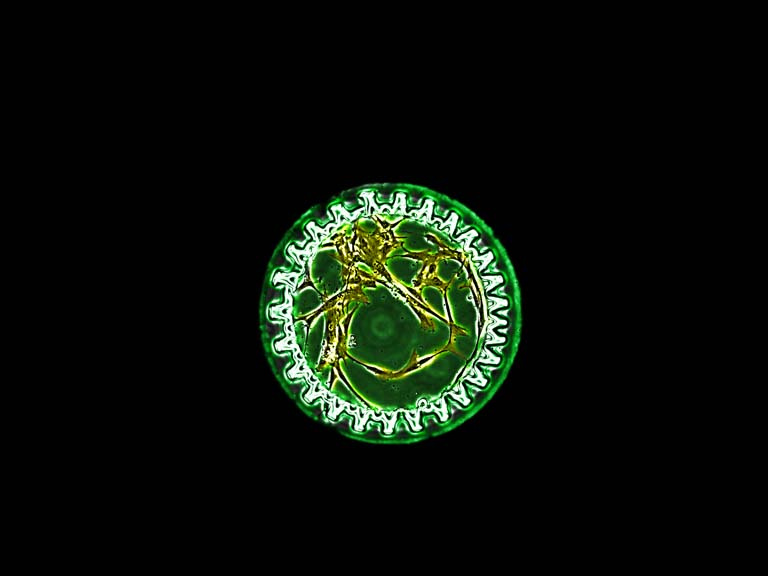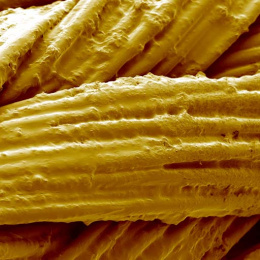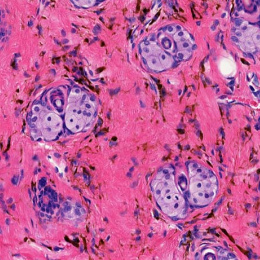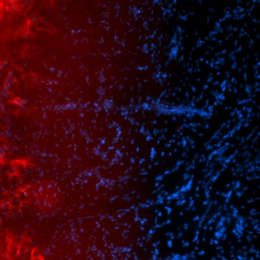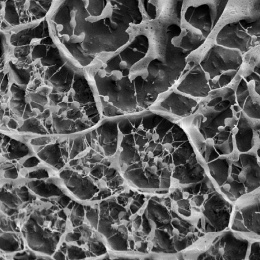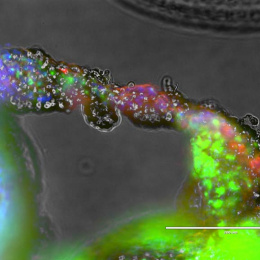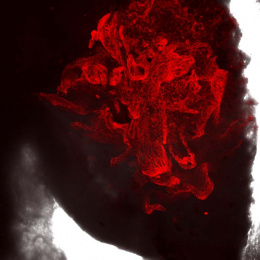Self-Assembly in a Next Generation Polymer
Self-Assembly in a Next Generation Polymer
Fangheng Zhou, Benjamin Larson, Eric Appel, Héloïse Ragelle, Miralem Prijic, Robert Langer, Daniel Anderson
Koch Institute at MIT, MIT Department of Chemical Engineering, Institute of Medical Engineering and Science
We wanted to investigate interactions between plastics (polymers) and stem cells. Specifically, we were interested in designing next-generation biocompatible polymers that would be implantable in humans to cure degenerative diseases that if left untreated can cause organ failure, paralysis, or require amputation.
This image was just one of hundreds of images from our high-throughput polymer screening platform. We were trying to learn about our new polymer formulation; its chemistry, geometry, and effects on stem cell attachment, proliferation, and morphology. Because many of these next-generation polymers have never been seen before, we sometimes have wildly unexpected and exciting findings, like the self-assembly of micro gear-like structures in the photomicrograph here.
